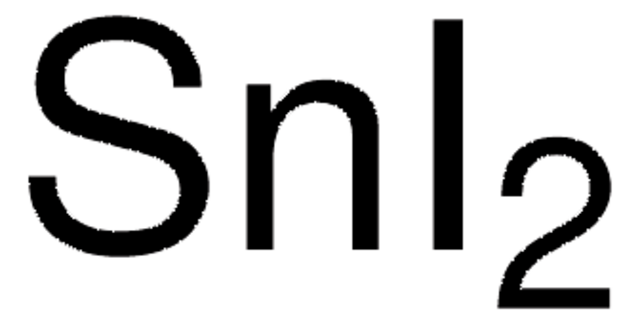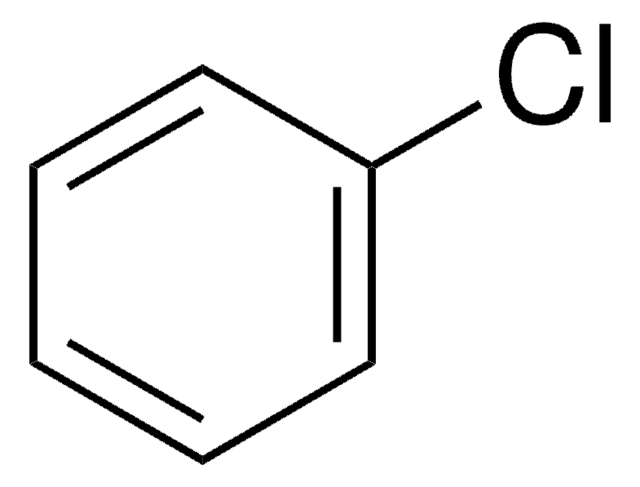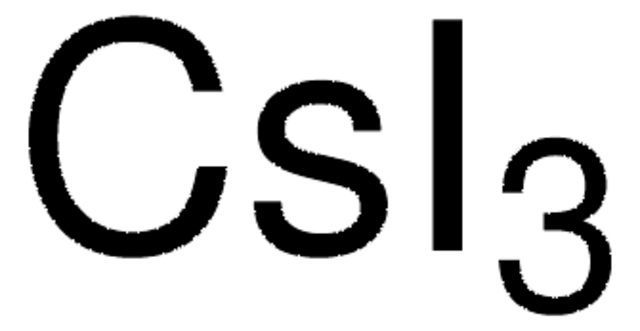429384
Cesium iodide
AnhydroBeads™, −10 mesh, 99.999% trace metals basis
Synonyme(s) :
Cesium monoiodide
About This Item
Produits recommandés
Gamme de produits
AnhydroBeads™
Niveau de qualité
Pureté
99.999% trace metals basis
Forme
beads
Impuretés
≤15.0 ppm Trace Metal Analysis
Taille des particules
−10 mesh
Pf
626 °C (lit.)
Densité
4.51 g/mL at 25 °C (lit.)
Chaîne SMILES
[I-].[Cs+]
InChI
1S/Cs.HI/h;1H/q+1;/p-1
Clé InChI
XQPRBTXUXXVTKB-UHFFFAOYSA-M
Vous recherchez des produits similaires ? Visite Guide de comparaison des produits
Application
- Fabrication of Nanoscale Cesium Iodide Scintillators: This research focuses on the development of nanoscale cesium iodide scintillators for high-energy radiation detection, relevant for material scientists working on advanced detection technologies (CY Chen, CW Hun, SF Chen, CC Chen, 2015).
- Photoemission and Optical Constant Measurements: Research on the photoemission and optical properties of a cesium iodide thin film photocathode, relevant for understanding light-matter interactions in material science (R Rai, N Gupta, NFA Jammal, BK Singh, 2015).
Caractéristiques et avantages
Informations légales
À utiliser avec
Mention d'avertissement
Warning
Mentions de danger
Conseils de prudence
Classification des risques
Aquatic Acute 1 - Repr. 2
Code de la classe de stockage
13 - Non Combustible Solids
Classe de danger pour l'eau (WGK)
WGK 2
Point d'éclair (°F)
Not applicable
Point d'éclair (°C)
Not applicable
Équipement de protection individuelle
dust mask type N95 (US), Eyeshields, Faceshields, Gloves
Faites votre choix parmi les versions les plus récentes :
Déjà en possession de ce produit ?
Retrouvez la documentation relative aux produits que vous avez récemment achetés dans la Bibliothèque de documents.
Les clients ont également consulté
Articles
Colloidal quantum dots (CQDs) are semiconducting crystals of only a few nanometers (ca. 2–12 nm) coated with ligand/surfactant molecules to help prevent agglomeration.
Notre équipe de scientifiques dispose d'une expérience dans tous les secteurs de la recherche, notamment en sciences de la vie, science des matériaux, synthèse chimique, chromatographie, analyse et dans de nombreux autres domaines..
Contacter notre Service technique















